Zihang Cheng
Cell-free massive MIMO Channels in an Urban Environment -- Measurements and Channel Statistics
Jun 03, 2024
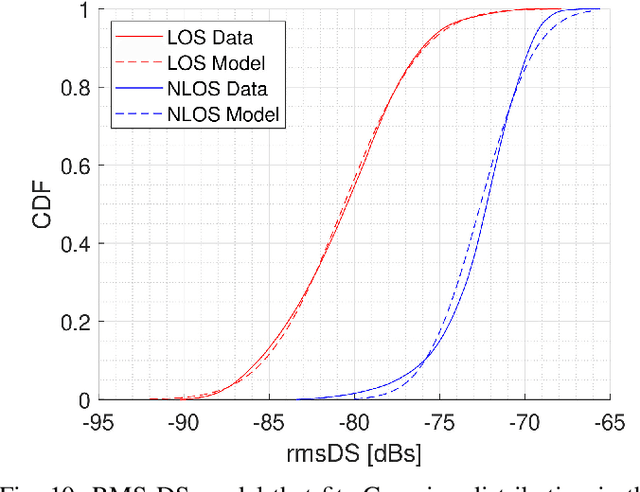
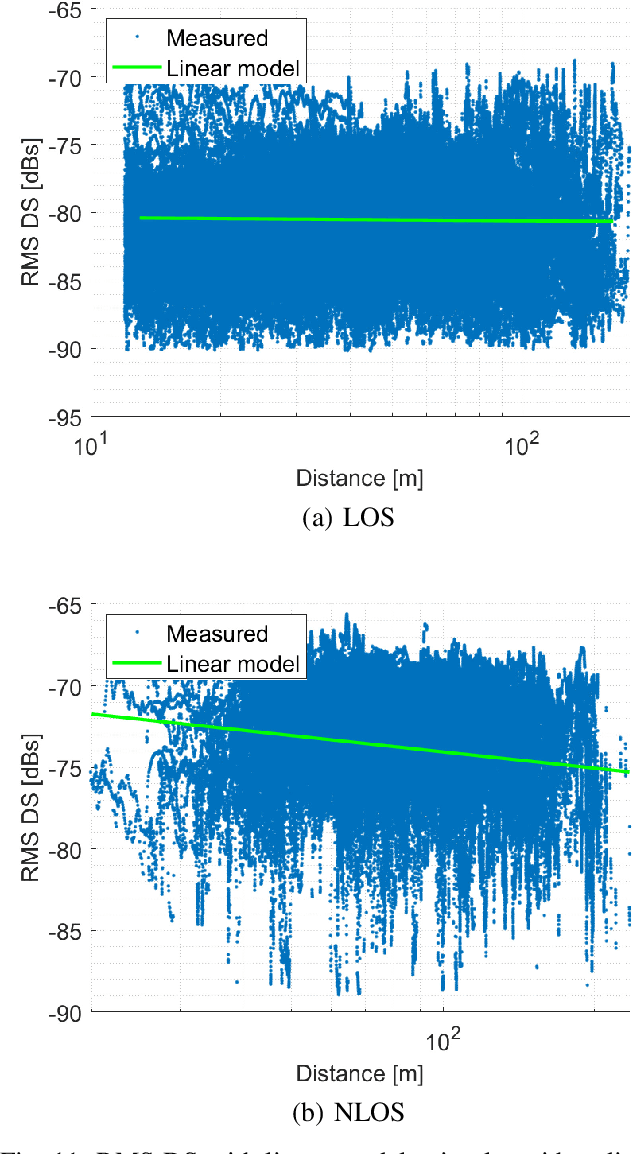
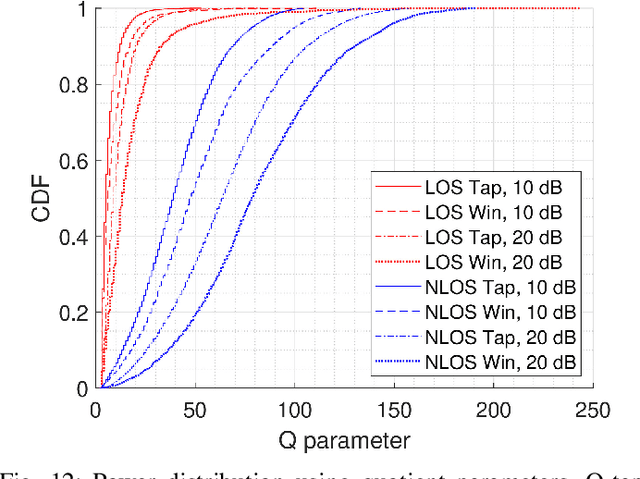
Abstract:Cell-free massive MIMO (CF-mMIMO), where each user equipment (UE) is connected to multiple access points (APs), is emerging as an important component for 5G and 6G cellular systems. Accurate channel models based on measurements are required to optimize their design and deployment. This paper presents an extensive measurement campaign for CF-mMIMO in an urban environment. A new "virtual AP" technique measures channels between 80 UE locations and more than 20,000 possible microcellular AP locations. Measurements are done at 3.5 GHz carrier frequency with 350 MHz bandwidth (BW). The paper describes the measurement setup and data processing, shows sample results and their physical interpretation, and provides statistics for key quantities such as pathloss, shadowing, delay spread (DS), and delay window. We find pathloss coefficients of 2.9 and 10.4 for line-of-sight (LOS) and non line-of-sight (NLOS), respectively, where the high LOS coefficient is mainly because larger distance leads to more grazing angle of incidence and thus lower antenna gain in our setup. Shadowing standard deviations are 5.1/16.6 dB, and root mean squared (RMS) DSs of -80.6/-72.6 dBs. The measurements can also be used for parameterizing a CUNEC-type model, which will be reported in future work.
Large-scale Outdoor Cell-free mMIMO Channel Measurement in an Urban Scenario at 3.5 GHz
May 31, 2024Abstract:The design of cell-free massive MIMO (CF-mMIMO) systems requires accurate, measurement-based channel models. This paper provides the first results from the by far most extensive outdoor measurement campaign for CF-mMIMO channels in an urban environment. We measured impulse responses between over 20,000 potential access point (AP) locations and 80 user equipments (UEs) at 3.5 GHz with 350 MHz bandwidth (BW). Measurements use a "virtual array" approach at the AP and a hybrid switched/virtual approach at the UE. This paper describes the sounder design, measurement environment, data processing, and sample results, particularly the evolution of the power-delay profiles (PDPs) as a function of the AP locations, and its relation to the propagation environment.
A Framework for Developing and Evaluating Algorithms for Estimating Multipath Propagation Parameters from Channel Sounder Measurements
Oct 12, 2023
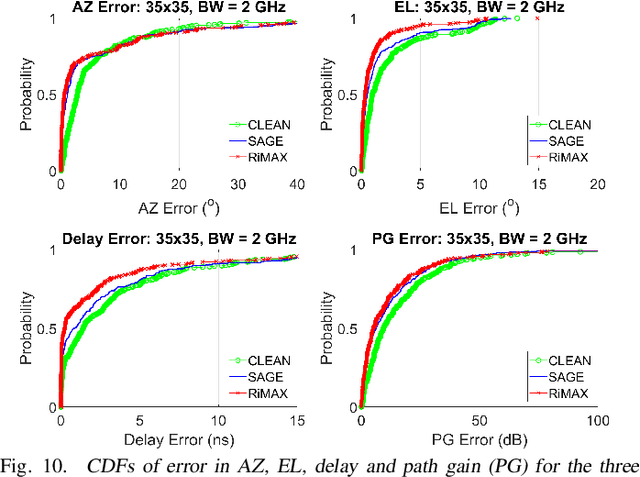
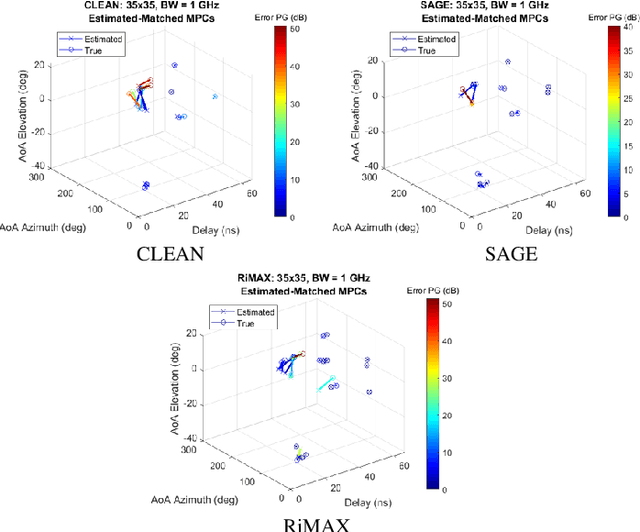
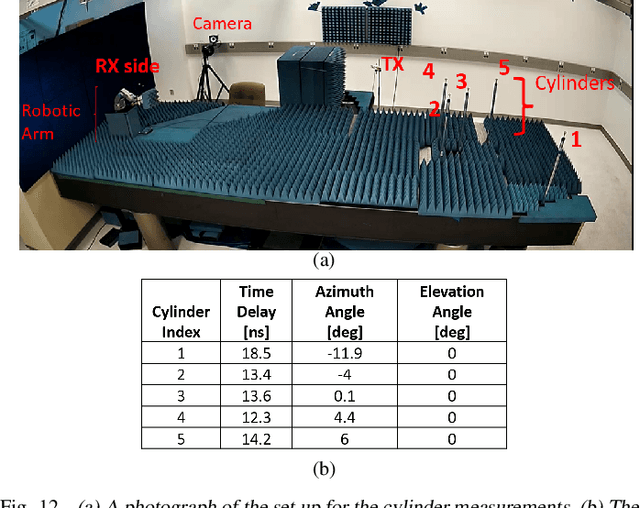
Abstract:A framework is proposed for developing and evaluating algorithms for extracting multipath propagation components (MPCs) from measurements collected by channel sounders at millimeter-wave frequencies. Sounders equipped with an omnidirectional transmitter and a receiver with a uniform planar array (UPA) are considered. An accurate mathematical model is developed for the spatial frequency response of the sounder that incorporates the non-ideal cross-polar beampatterns for the UPA elements. Due to the limited Field-of-View (FoV) of each element, the model is extended to accommodate multi-FoV measurements in distinct azimuth directions. A beamspace representation of the spatial frequency response is leveraged to develop three progressively complex algorithms aimed at solving the singlesnapshot maximum likelihood estimation problem: greedy matching pursuit (CLEAN), space-alternative generalized expectationmaximization (SAGE), and RiMAX. The first two are based on purely specular MPCs whereas RiMAX also accommodates diffuse MPCs. Two approaches for performance evaluation are proposed, one with knowledge of ground truth parameters, and one based on reconstruction mean-squared error. The three algorithms are compared through a demanding channel model with hundreds of MPCs and through real measurements. The results demonstrate that CLEAN gives quite reasonable estimates which are improved by SAGE and RiMAX. Lessons learned and directions for future research are discussed.
A Framework for Developing Algorithms for Estimating Propagation Parameters from Measurements
Sep 13, 2021
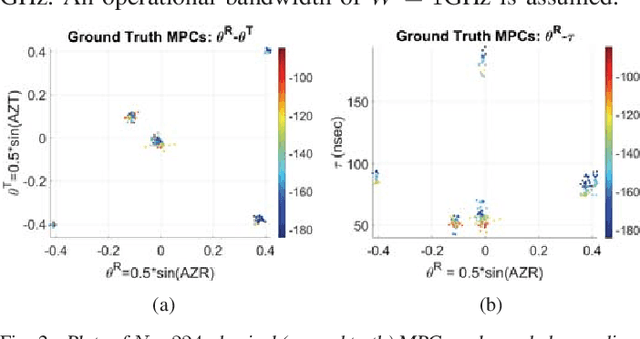
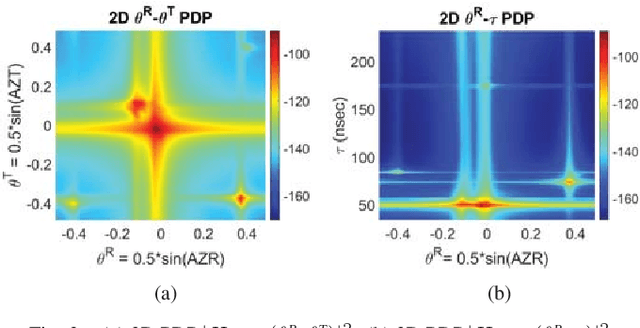
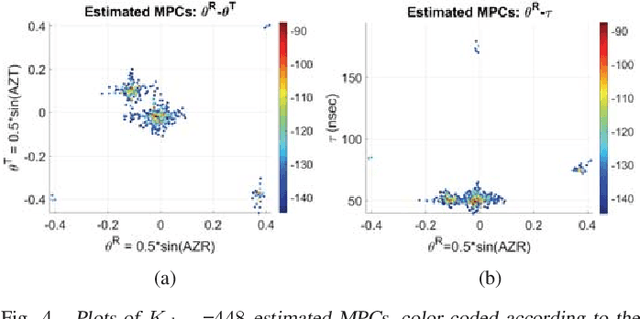
Abstract:A framework is proposed for developing and evaluating algorithms for extracting multipath propagation components (MPCs) from measurements collected by sounders at millimeter-wave (mmW) frequencies. To focus on algorithmic performance, an idealized model is proposed for the spatial frequency response of the propagation environment measured by a sounder. The input to the sounder model is a pre-determined set of MPC parameters that serve as the "ground truth." A three-dimensional angle-delay (beamspace) representation of the measured spatial frequency response serves as a natural domain for implementing and analyzing MPC extraction algorithms. Metrics for quantifying the error in estimated MPC parameters are introduced. Initial results are presented for a greedy matching pursuit algorithm that performs a least-squares (LS) reconstruction of the MPC path gains within the iterations. The results indicate that the simple greedy-LS algorithm has the ability to extract MPCs over a large dynamic range, and suggest several avenues for further performance improvement through extensions of the greedy-LS algorithm as well as by incorporating features of other algorithms, such as SAGE and RIMAX.
 Add to Chrome
Add to Chrome Add to Firefox
Add to Firefox Add to Edge
Add to Edge